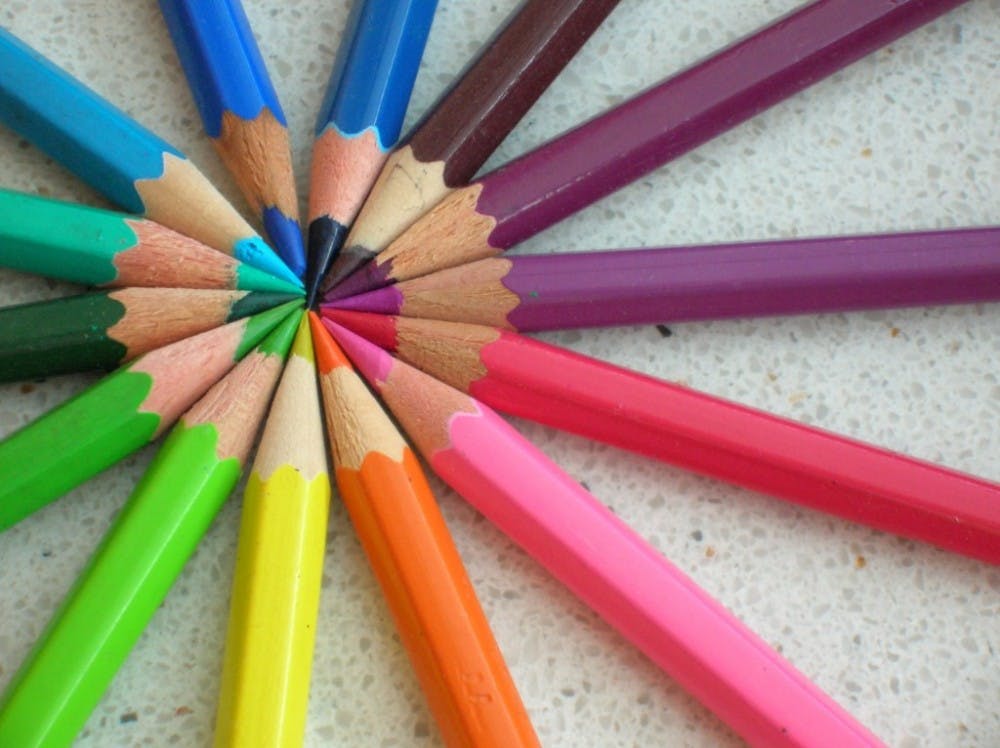The next time you see a child coloring, take a moment and observe him or her. It may seem like this child is consumed with the experience and not showing any signs of stress or despair. Perhaps the child is even showing outward signs of enjoyment and relaxation. A recent movement suggests that coloring might have similar effects on adults as well.
The recent movement toward “adult” coloring is apparent when one visits bookstores. Lavish displays of coloring books and colored pencils have taken center stage, relegating the best-sellers to tables in the back of the store. A recent search of “adult coloring books” on Amazon yielded over 22,000 results, with titles ranging from “Calm the F**k Down, an Irreverent Adult Coloring Book,” to “Fifty Shades of Fun: The New Joy of Coloring.” The Guardian recently reported that the top sellers on Amazon’s U.K. site are coloring books for grown-ups.
New research suggests that coloring can also reduce college students’ stress and ultimately help to improve their GPAs.
David Sandmire and others at the University of New England recently published an article in Art Therapy: Journal of the American Art Therapy Association that examined the psychological effects of art-making in a sample of 57 undergraduate students. One week before their final exams, the students were randomly assigned to either a control group or an art-making group. The art-making exercises included coloring pre-designed mandalas. Before and after participating in this experiment, both groups of students were administered the State-Trait Anxiety Inventory, which is a commonly-used measure of two different forms of anxiety. The mean state anxiety score decreased significantly after the students in the experimental group participating in coloring. No difference was found in the control group. The researchers concluded that a brief period of art-making can significantly reduce a person’s state of anxiety.
When we color, different areas of our two cerebral hemispheres are activated, according to psychologist Gloria Martinez Ayala.
“The action involves both logic, by which we color forms, and creativity, when mixing and matching colors. This incorporates the areas of the cerebral cortex involved in vision and fine motor skills. The relaxation that it provides lowers the activity of the amygdala, a basic part of our brain involved in controlling emotion that is affected by stress,” Martinez Ayala told The Huffington Post.
Basically, when we focus on a particular activity, we are unable to focus on other thoughts, such as our worries. Coloring provides us with an enjoyable and productive activity to focus on, in place of our anxieties. It also reminds us of our childhood, a time in which most of us experienced significantly less stress.
Johanna Basford, a Scottish illustrator whose 2013 book “Secret Garden: An Inky Treasure Hunt and Coloring Book” sold nearly 1.5 million copies worldwide, agreed that the power of adult coloring books can lie in their ability to remind users of a more carefree age.
“I think there’s definitely a nostalgic charm to coloring and various other childlike pursuits that are becoming popular with adults,” Basford told Slate. “In some ways I think this is because it allows us to regress to a mindset when times were carefree and we didn’t have grown-up worries such as making rent payments or an annoying boss at work! It’s good to play. You rarely see a stressed out 7-year old!”
So, perhaps some coloring breaks during finals crunch can help reduce stress and help us tackle our exams in a more relaxed state. The research suggests that it’s worth a try.





